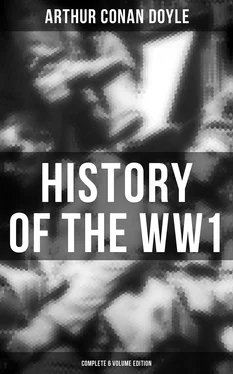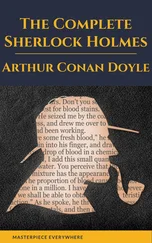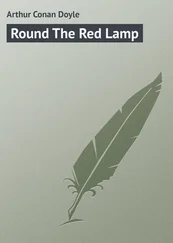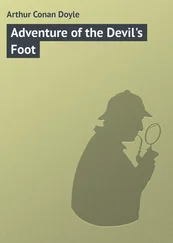Day had dawned, and though the British and Indians were in the enemy trenches, it was absolutely impossible to send them up reinforcements across the bullet-swept plain. The 59th discovered a sap running from their left to the German line, and along this they pushed. They could not get through, however, to where their comrades were being terribly bombed on either flank by the counter-attack. It was an heroic resistance. Colonel Ronaldson, who led the party, held on all day, but was very lucky in being able to withdraw most of the survivors after nightfall. Of the hundred Punjabis who held one flank, only three returned, while thirteen wounded were reported later from Germany. The others all refused to surrender, declaring that those were the last orders of their British officers, and so they met their honoured end. It had been a long and weary day with a barren ending, for all that had been won was abandoned. The losses were over a thousand, and were especially heavy in the case of officers.
The Germans, elated by the failure of the attack, were in the mood for a return visit. In the early dawn of the next day, December 20, they began a heavy bombardment of the Indian trenches, followed by an infantry attack extending over a line of six miles from south of the Bethune Canal to Festubert in the north. The attack began by the explosion of a succession of mines which inflicted very heavy losses upon the survivors of the Ghurkas and Highland Light Infantry. The weight of the attack at the village of Givenchy fell upon the exhausted Sirhind Heavy Brigade, who were driven back, and the greater part of Givenchy was occupied by the enemy. General Brunker fell back with his Brigade, but his line was stiffened by the arrival of the 47th Sikhs of the 8th Jullundur Brigade, who were in divisional reserve. These troops prevented any further advance of the Germans, while preparations were made for an effective counter-stroke.
Little help could be given from the north, where the line was already engaged, but to the south there were considerable bodies of troops available. The situation was serious, and a great effort was called for, since it was impossible to abandon into the hands of the enemy a village which was an essential bastion upon the line of defence. The German attack had flooded down south of Givenchy to the Bethune Canal, and a subsidiary attack had come along the south of the Canal with the object of holding the troops in their places and preventing the reinforcement of the defenders of Givenchy. But these advances south of the village made no progress, being held up by the 9th Bhopals and Wilde’s 57th Rifles of the 7th Ferozepore Brigade between Givenchy and the canal, while the 1st Connaught Rangers of the same brigade stopped it on the southern side of the canal. Matters were for a moment in equilibrium. To the south of the canal energetic measures were taken to get together a force which could come across it by the Pont Fixe or road bridge, and reestablish matters in the north.
The struggle had broken out close to the point of junction between the British forces and those of General Foch of the Tenth French Army, so that our Allies were able to co-operate with us in the counter-attack. It was directed by General Carnegy, and the assault was made by the 1st Manchesters, the 4th Suffolk Territorials, and some French territorials. The Manchesters, under the leadership of Colonel Strickland, made a most notable attack, aided by two companies of the Suffolks, the other companies remaining in reserve on the north bank of the canal. So critical was the position that the 3rd Indian Sappers and Miners were set the dangerous task, under very heavy shell-fire, of mining the bridge over the canal. The situation was saved, however, by Colonel Strickland’s fine advance. His infantry, with very inadequate artillery support, pushed its way into Givenchy and cleared the village from end to end. Three hundred of the Manchesters fell in this deed of arms. Not only did they win the village, but they also regained some of the lost trenches to the north-east of Givenchy. This was the real turning-point of the action. There was at the time only the one very wet, very weary, and rather cut-up Jullundur Brigade between the Germans and Bethune—with all that Bethune stood for strategically. To the east the 9th Bhopals and 57th Rifles still held on to their position. It was only to the north that the enemy retained his lodgment.
But the fight to the north had been a bitter one all day, and had gone none too well for the British forces. The Indians were fighting at an enormous disadvantage. As well turn a tiger loose upon an ice-floe and expect that he will show all his wonted fierceness and activity. There are inexorable axioms of Nature which no human valour nor constancy can change. The bravest of the brave, our Indian troops were none the less the children of the sun, dependent upon warmth for their vitality and numbed by the cold wet life of the trenches. That they still in the main maintained a brave, uncomplaining, soldierly demeanour, and that they made head against the fierce German assaults, is a wonderful proof of their adaptability.
About ten o’clock on the morning of the 20th the German attack, driving back the Sirhind Brigade from Givenchy, who were the left advanced flank of the Lahore Division, came with a rush against the Dehra-Dun Brigade, who were the extreme right of the Meerut Division. This Brigade had the 1st Seaforth Highlanders upon its flank, with the 2nd Ghurkas upon its left. The Ghurkas were forced to retire, and the almost simultaneous retirement of the defenders of Givenchy left the Highlanders in a desperate position with both flanks in the air. Fortunately the next Brigade of the Meerut Division, the Garhwal Brigade, stood fast and kept in touch with the 6th Jats, who formed the left of the Dehra Dun Brigade, and so prevented the pressure upon that side from becoming intolerable. The 9th Ghurkas came up to support the 2nd Ghurkas, who had not gone far from their abandoned trenches, and the 58th Indian Rifles also came to the front. These battalions upon the left rear of the Highlanders gave them some support. None the less the position of the battalion was dangerous and its losses heavy, but it faced the Germans with splendid firmness, and nothing could budge it. Machine-guns are stronger than flesh and blood, but the human spirit can be stronger than either. You might kill the Highlanders, but you could not shift them. The 2nd Black Watch, who had been in reserve, established touch towards nightfall with the right of the Seaforths, and also with the left of the Sirhind Brigade, so that a continuous line was assured.
In the meantime a small force had assembled under General MacBean with the intention of making a counter-attack and recovering the ground which had been lost on the north side of Givenchy, With the 8th Ghurkas and the 47th Sikhs, together with the 7th British Dragoon Guards, an attack was made in the early hours of the 21st. Colonel Lempriere of the Dragoon Guards was killed, and the attack failed. It was renewed in the early hours of the morning, but it again failed to dislodge the Germans from the captured trenches.
December 21 dawned upon a situation which was not particularly rosy from a British point of view. It is true that Givenchy had been recovered, but a considerable stretch of trenches were still in the hands of the Germans, their artillery was exceedingly masterful, and the British line was weakened by heavy losses and indented in several places. The one bright spot was the advance of the First Division of Haig’s Corps, who had come up in the night-time. The three brigades of this Division were at once thrown into the fight, the first being sent to Givenchy, the second given as a support to the Meerut Division, and the third directed upon the trenches which had been evacuated the day before by the Sirhind Brigade. All of these brigades won their way forward, and by the morning of the 22nd much of the ground which had been taken by the Germans was reoccupied by the British. The 1st Brigade, led by the Cameron Highlanders, had made good all the ground between Givenchy and the canal. Meanwhile the 3rd Brigade had re-established the Festubert position, where the 2nd Welsh and 1st South Wales Borderers had won their way into the lost trenches of the Ghurkas. This was not done without very stark fighting, in which of all the regiments engaged none suffered so heavily as the 2nd Munsters (now attached to the 3rd Brigade). This regiment, only just built up again after its practical extermination at Étreux in August, made a grand advance and fought without cessation for nearly forty-eight hours. Their losses were dreadful, including their gallant Colonel Bent, both Majors Day and Thomson, five other officers, and several hundreds of the rank and file. So far forward did they get that it was with great difficulty that the survivors, through the exertions of Major Ryan, were got back into a place of safety. It was the second of three occasions upon which this gallant Celtic battalion gave itself for King and Country. Let this soften the asperity of politics if unhappily we must come back to them after the war.
Читать дальше












